Growing Winged Beans can seem intimidating, but trust me, it’s a rewarding experience that brings a unique and delicious addition to your garden and your plate! Have you ever dreamt of harvesting your own vibrant, four-sided beans, bursting with nutrients and a subtly sweet flavor? This DIY guide will unlock the secrets to successfully cultivating these fascinating legumes, even if you’re a beginner gardener.
Winged beans, also known as asparagus peas or Goa beans, boast a rich history, particularly in Southeast Asia and Papua New Guinea, where they’ve been a staple food source for centuries. They’re not just tasty; they’re incredibly versatile! Every part of the plant – the pods, leaves, flowers, and even the roots – is edible and packed with vitamins and minerals.
In today’s world, where we’re increasingly conscious of sustainable living and healthy eating, growing winged beans offers a fantastic way to connect with nature, reduce your carbon footprint, and enjoy fresh, homegrown produce. Plus, with rising grocery prices, learning to cultivate your own food is a smart and empowering skill. This DIY article will provide you with simple, step-by-step instructions and helpful tips to ensure a bountiful harvest. Let’s get started and transform your garden into a winged bean paradise!
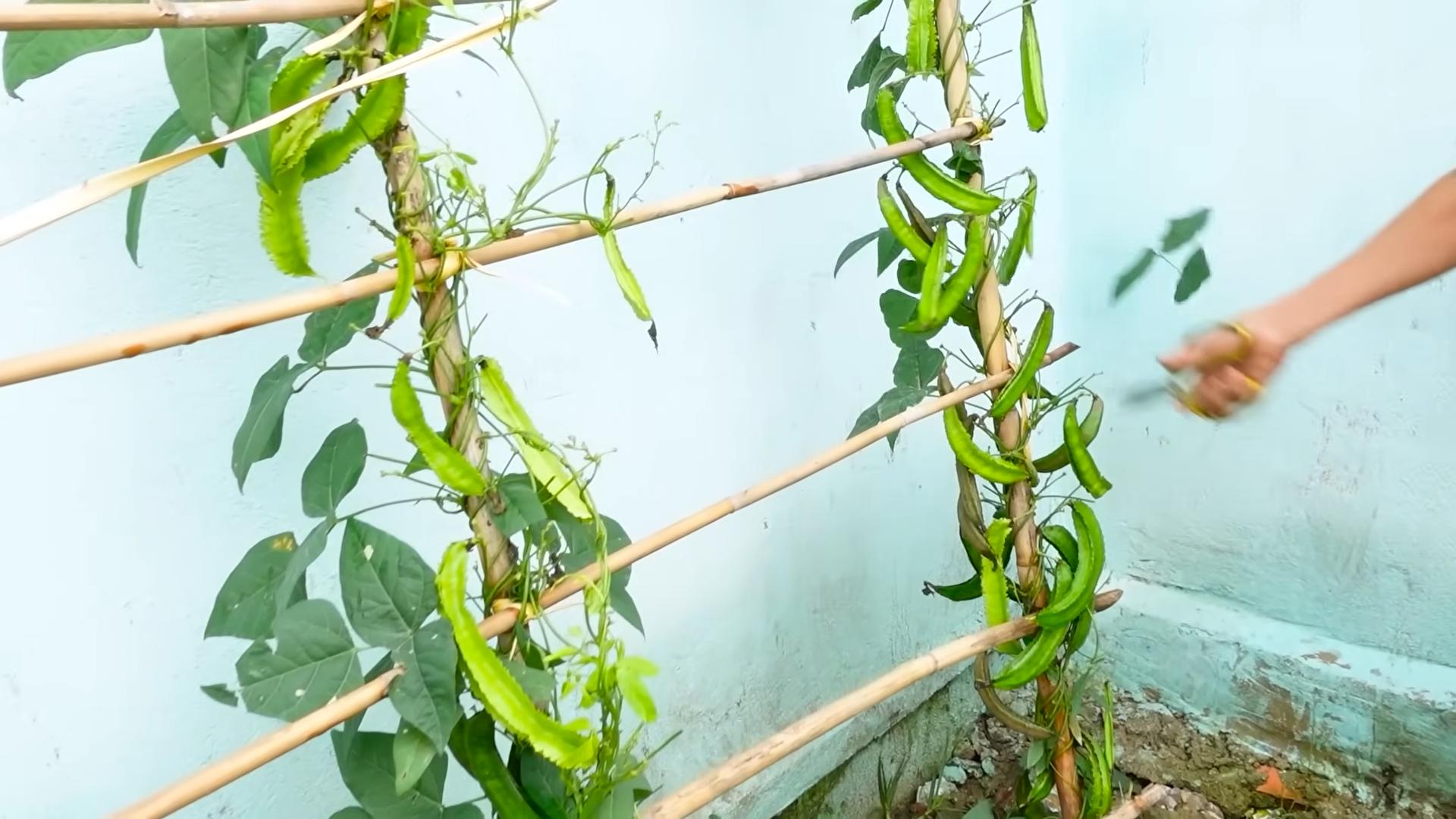
Growing Winged Beans might sound exotic, but trust me, adding this vibrant and nutritious legume to your home garden is easier than you think! I’m so excited to share everything I’ve learned about cultivating these fascinating plants. For centuries, winged beans have been a staple in Southeast Asian and Papua New Guinean cuisine, prized for their versatility – you can eat the pods, leaves, flowers, seeds, and even the roots!
But why should you consider growing winged beans? Well, beyond their incredible nutritional value (they’re packed with protein!), they’re also a beautiful and productive addition to any garden. Imagine harvesting fresh, crisp pods right from your backyard, knowing exactly where your food comes from. Plus, they’re nitrogen-fixing, meaning they naturally enrich your soil, benefiting other plants around them.
In this complete guide, I’ll walk you through every step, from selecting the right seeds and preparing your soil to providing the perfect support system and harvesting your bounty. Forget complicated gardening techniques – I’m all about simple, effective methods that anyone can follow. So, let’s get our hands dirty and discover the joy of growing these amazing beans together!
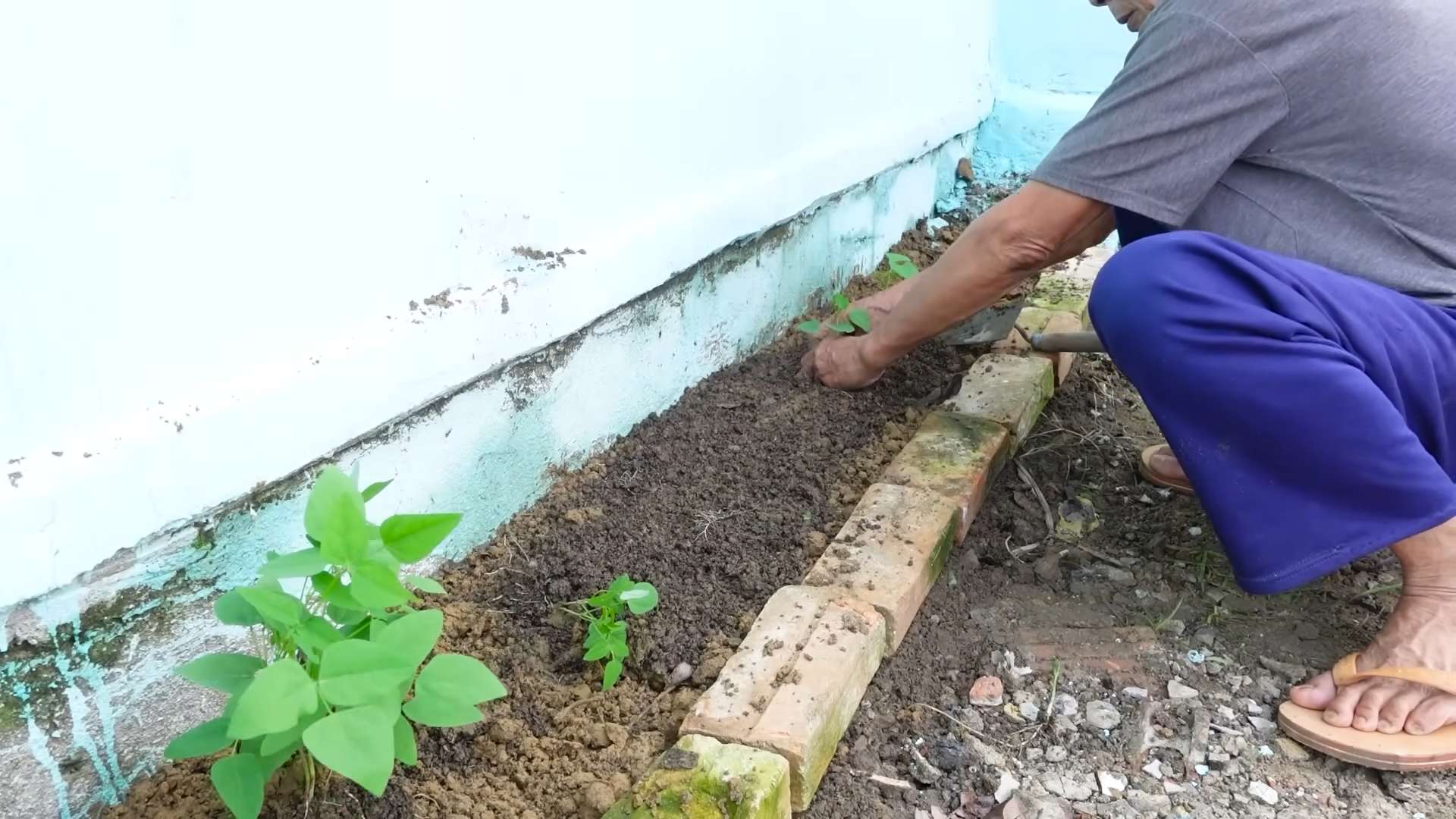
Conclusion
So, there you have it! Growing winged beans at home is not only achievable but also incredibly rewarding. This DIY project transforms your garden into a source of fresh, nutritious, and visually stunning produce. Forget bland, store-bought vegetables; imagine stepping outside and harvesting your own vibrant, uniquely shaped winged beans, ready to be transformed into culinary masterpieces.
Why is this a must-try? Because it’s more than just growing a vegetable; it’s about connecting with nature, understanding the food you eat, and enjoying the satisfaction of nurturing something from seed to table. Winged beans are packed with protein, vitamins, and minerals, making them a powerhouse of nutrition. Plus, their unique flavor profile – often described as a blend of asparagus and green beans, with a hint of nuttiness – adds a delightful twist to your meals.
But the benefits don’t stop there. Growing winged beans is also an environmentally friendly choice. By cultivating your own food, you reduce your reliance on commercially grown produce, which often involves long-distance transportation and intensive farming practices. You’ll also be contributing to biodiversity by growing a less common vegetable.
Ready to take your winged bean journey to the next level? Consider these variations and suggestions:
* Trellis Designs: Experiment with different trellis designs to create a visually appealing garden feature. A teepee trellis, an archway, or even a simple fence can provide the support winged beans need while adding character to your outdoor space.
* Companion Planting: Winged beans thrive when planted alongside certain companion plants. Consider planting them near corn, sunflowers, or rosemary to deter pests and improve growth.
* Seed Saving: Once your winged beans mature, save some of the seeds for future planting. This ensures a continuous supply of this delicious and nutritious vegetable.
* Culinary Explorations: Don’t limit yourself to just one or two recipes. Winged beans can be used in a variety of dishes, from stir-fries and salads to soups and stews. Explore different cuisines and experiment with flavors to discover your favorite ways to enjoy winged beans. Try grilling them with a little olive oil and sea salt for a simple yet delicious side dish. Or, add them to a coconut milk-based curry for a flavorful and exotic meal.
* Growing in Containers: If you have limited garden space, don’t worry! Winged beans can also be grown in containers. Choose a large pot with good drainage and provide a sturdy trellis for the vines to climb.
We’re confident that you’ll find growing winged beans to be a rewarding and enjoyable experience. So, grab some seeds, prepare your garden, and get ready to embark on this exciting adventure. We encourage you to try this DIY trick and share your experiences with us! Let us know what varieties you’re growing, what recipes you’re trying, and any tips or tricks you discover along the way. Your insights could help other gardeners successfully cultivate this amazing vegetable. Share your photos and stories on social media using #WingedBeanAdventures. We can’t wait to see what you create!
Frequently Asked Questions (FAQ)
What are winged beans, and why should I grow them?
Winged beans (Psophocarpus tetragonolobus) are a legume native to Southeast Asia. They are unique because almost every part of the plant is edible, including the pods, leaves, flowers, roots, and seeds. They are exceptionally nutritious, boasting high levels of protein, fiber, vitamins, and minerals. Growing them at home provides fresh, organic produce and reduces your carbon footprint. Plus, they are beautiful plants that can add visual interest to your garden.
How do I start growing winged beans?
You can start winged beans from seeds or seedlings. Seeds are generally more economical. Soak the seeds in warm water for 24 hours before planting to improve germination rates. Plant them directly in the ground or in containers after the last frost. Ensure the soil is well-draining and rich in organic matter. Provide a sturdy trellis or support structure for the vines to climb.
What kind of soil and sunlight do winged beans need?
Winged beans prefer well-draining soil with a pH between 6.0 and 7.5. Amend the soil with compost or other organic matter to improve fertility and drainage. They need at least 6-8 hours of direct sunlight per day to thrive. In hotter climates, some afternoon shade can be beneficial.
How often should I water winged beans?
Water winged beans regularly, especially during hot, dry weather. Keep the soil consistently moist but not waterlogged. Avoid overhead watering, as this can increase the risk of fungal diseases. Mulching around the plants can help retain moisture and suppress weeds.
What kind of trellis or support system do winged beans need?
Winged beans are vigorous climbers and require a strong trellis or support system. A trellis made of wood, bamboo, or metal works well. You can also use a fence, arbor, or even a sturdy tree branch. Ensure the trellis is tall enough to accommodate the vines, which can grow up to 10-12 feet long.
How long does it take for winged beans to mature?
Winged beans typically take 60-90 days to mature, depending on the variety and growing conditions. You can start harvesting the pods when they are young and tender, usually about 6-8 inches long. Regular harvesting encourages continued production.
What are some common pests and diseases that affect winged beans?
Winged beans are relatively pest-resistant, but they can be susceptible to aphids, spider mites, and bean beetles. Inspect your plants regularly and take action promptly if you notice any signs of infestation. Insecticidal soap or neem oil can be effective treatments. Fungal diseases, such as powdery mildew, can also be a problem, especially in humid conditions. Ensure good air circulation around the plants and avoid overhead watering to prevent these diseases.
Can I grow winged beans in containers?
Yes, winged beans can be grown in containers. Choose a large pot (at least 12 inches in diameter) with good drainage. Use a well-draining potting mix and provide a sturdy trellis for the vines to climb. Water regularly and fertilize every few weeks with a balanced fertilizer.
How do I harvest winged beans?
Harvest the pods when they are young and tender, usually about 6-8 inches long. Use scissors or pruning shears to cut the pods from the vine. Regular harvesting encourages continued production. You can also harvest the leaves, flowers, and roots for culinary use.
How do I store winged beans?
Freshly harvested winged beans can be stored in the refrigerator for up to a week. Wrap them in a damp paper towel and place them in a plastic bag. You can also freeze winged beans for longer storage. Blanch them in boiling water for 2-3 minutes, then cool them in ice water. Drain well and store in freezer bags.
Are there different varieties of winged beans?
Yes, there are several varieties of winged beans, each with slightly different characteristics. Some varieties are more heat-tolerant, while others are more cold-tolerant. Some produce longer pods, while others have different colored flowers. Research different varieties to find one that is well-suited to your climate and growing conditions.
Can I eat the entire winged bean plant?
Yes, almost every part of the winged bean plant is edible. The pods are the most commonly eaten part, but the leaves, flowers, roots, and seeds are also edible. The leaves can be eaten raw or cooked, the flowers can be added to salads, the roots can be boiled or roasted, and the seeds can be roasted or ground into flour.
Are winged beans good for you?
Yes, winged beans are incredibly nutritious. They are a good source of protein, fiber, vitamins, and minerals. They are also low in calories and fat. Eating winged beans can help improve digestion, boost immunity, and protect against chronic diseases.
How can I use winged beans in cooking?
Winged beans can be used in a variety of dishes. They can be stir-fried, steamed, boiled, grilled, or added to soups and stews. They have a unique flavor that is often described as a blend of asparagus and green beans, with a hint of nuttiness. Try them in stir-fries with garlic and ginger, in salads with a vinaigrette dressing, or in curries with coconut milk.
Where can I find winged bean seeds or seedlings?
Winged bean seeds or seedlings can be found at some local nurseries or online seed suppliers. Search for reputable seed companies that specialize in heirloom or unusual vegetables. You may also be able to find them at farmers’ markets or through local gardening groups.

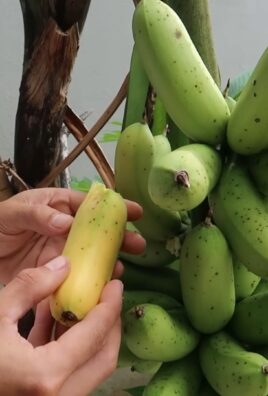
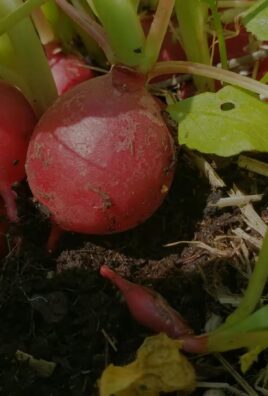
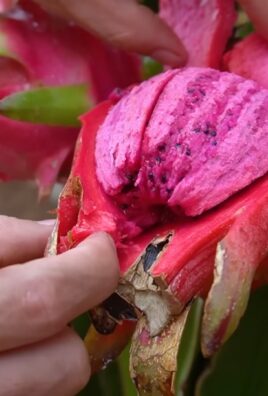
Leave a Comment